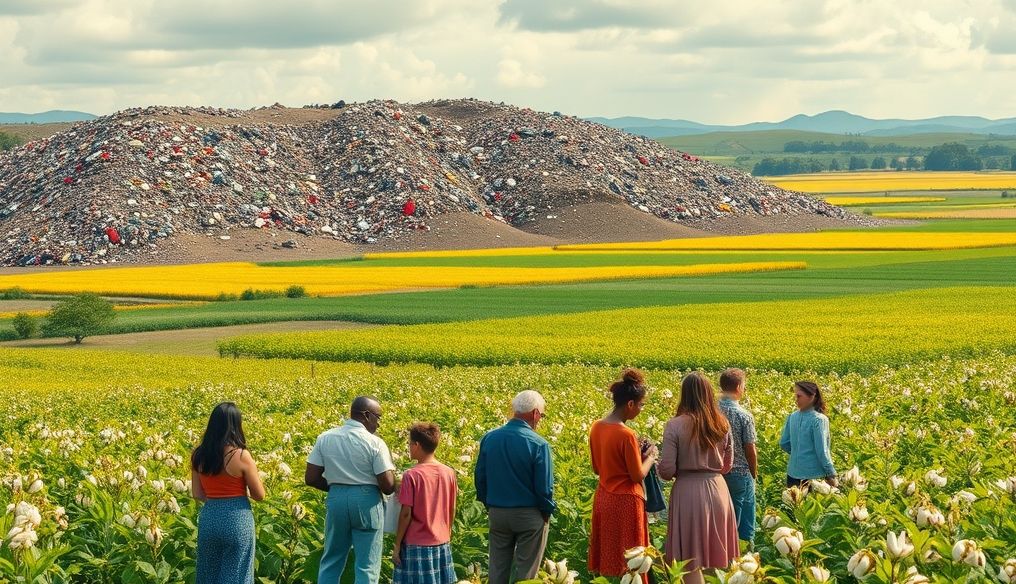Does Fast Fashion Really Destroy Our Planet?
Fast fashion is a business model based on producing cheap clothing in huge quantities to meet the latest fashion trends quickly. This industry has become an integral part of our lives, but have we ever considered the environmental price we pay for these cheap clothes?
1. What is Fast Fashion?
Fast fashion means producing clothes quickly and distributing them at low prices, encouraging consumers to buy more clothes and dispose of them quickly. This model relies on minimizing costs, often at the expense of the environment and workers' rights.
2. Environmental Impacts of Fast Fashion
Fast fashion causes serious environmental damage, including:
- Water Consumption: The textile industry consumes huge amounts of water, especially in cotton cultivation. To produce one cotton shirt, more than 2,700 liters of water may be needed.
- Chemical Pollution: Many harmful chemicals are used in dyeing and processing fabrics, which are often discharged into rivers and oceans, leading to water pollution and poisoning marine life.
- Greenhouse Gas Emissions: The textile industry is responsible for about 10% of global greenhouse gas emissions, more than the emissions from aviation and maritime shipping combined.
- Waste Accumulation: Huge amounts of clothing are disposed of in landfills every year. These clothes decompose slowly and release harmful gases such as methane, a greenhouse gas more potent than carbon dioxide.
- Soil Degradation: Intensive cotton cultivation leads to soil degradation and depletion, reducing its ability to support plant life.
3. Impact of Fast Fashion on Workers' Rights
In addition to environmental damage, fast fashion causes violations of workers' rights in developing countries, where most clothing is produced. Workers often work in unsafe conditions and for low wages, and are subjected to exploitation and abuse.
4. Materials Used in Fast Fashion
Fast fashion relies heavily on synthetic fabrics such as polyester, which is produced from oil. These fabrics are not biodegradable and contribute to plastic pollution.
5. Shocking Statistics and Figures
- About 100 billion new pieces of clothing are produced every year.
- 85% of clothing ends up in landfills.
- It takes more than 200 years for a piece of clothing made of polyester to decompose.
- The textile industry consumes about 93 billion cubic meters of water annually.
6. Sustainable Alternatives to Fast Fashion
There are many sustainable alternatives to fast fashion that can help reduce environmental damage and protect workers' rights, including:
- Buying Secondhand Clothes: Secondhand clothes can be purchased from thrift stores or online. This reduces the demand for new clothes and extends the life of existing clothes.
- Renting Clothes: Clothes can be rented for special occasions instead of buying them. This reduces the need to buy new clothes for every occasion.
- Buying Clothes Made from Sustainable Materials: Clothes made from environmentally friendly materials such as organic cotton, hemp, bamboo, and linen can be purchased.
- Supporting Sustainable Brands: Brands that adhere to environmentally friendly practices and respect workers' rights can be supported.
- Repairing Clothes: Instead of disposing of damaged clothes, they can be repaired and reused.
- Recycling Clothes: Unwanted clothes can be donated to charities or recycled.
7. The Consumer's Role in Combating Fast Fashion
As consumers, we have an important role to play in combating fast fashion. We can make conscious purchasing decisions and reduce our consumption of new clothes. We can also support sustainable brands and participate in awareness campaigns about the harms of fast fashion.
8. The Future of Sustainable Fashion
Sustainable fashion is not just a passing trend, but an inevitable necessity to protect our planet and ensure a better future for generations to come. With increasing awareness of the harms of fast fashion, the sustainable fashion sector is expected to experience significant growth in the coming years.
9. Practical Tips to Reduce Your Environmental Impact in Fashion
- Think Before You Buy: Do you really need this item? Will you use it frequently?
- Look for Quality: Choose high-quality clothes that last longer.
- Take Care of Your Clothes: Follow washing and care instructions to keep your clothes in good condition.
- Be Creative in Styling Clothes: Try new ways to style your old clothes to create different looks.
- Participate in Clothing Swaps: Organize clothing swap events with friends or neighbors.
"Every second, the equivalent of one garbage truck of textiles is landfilled or burned." - Ellen MacArthur Foundation




